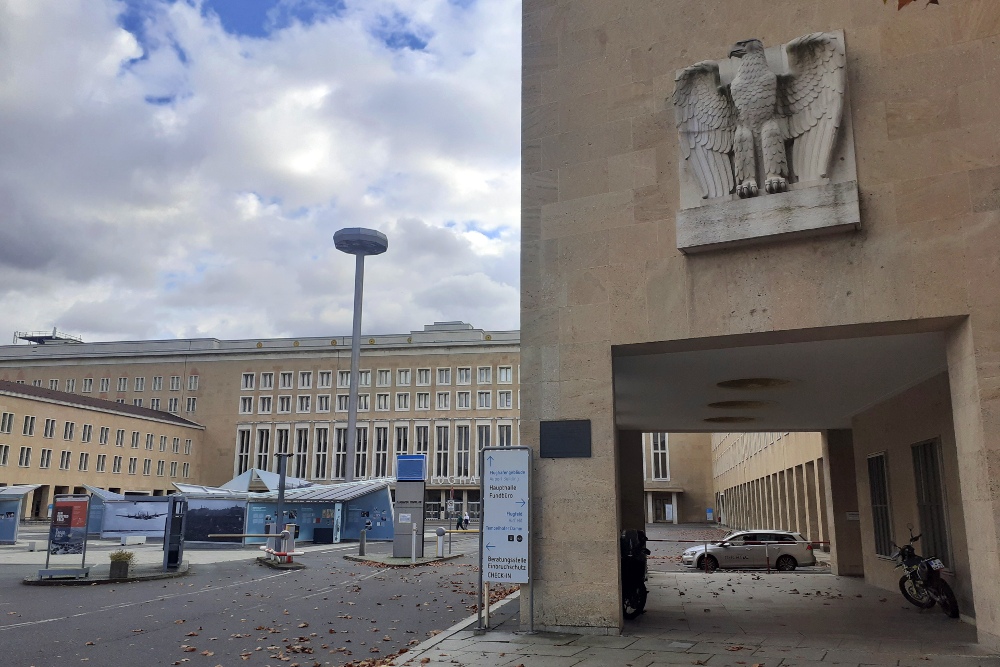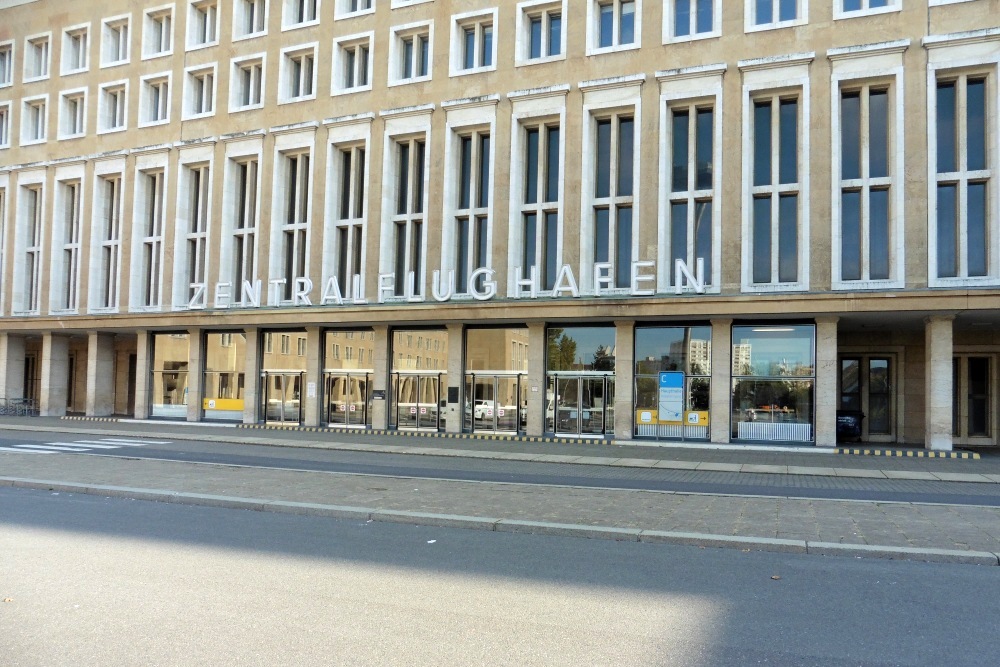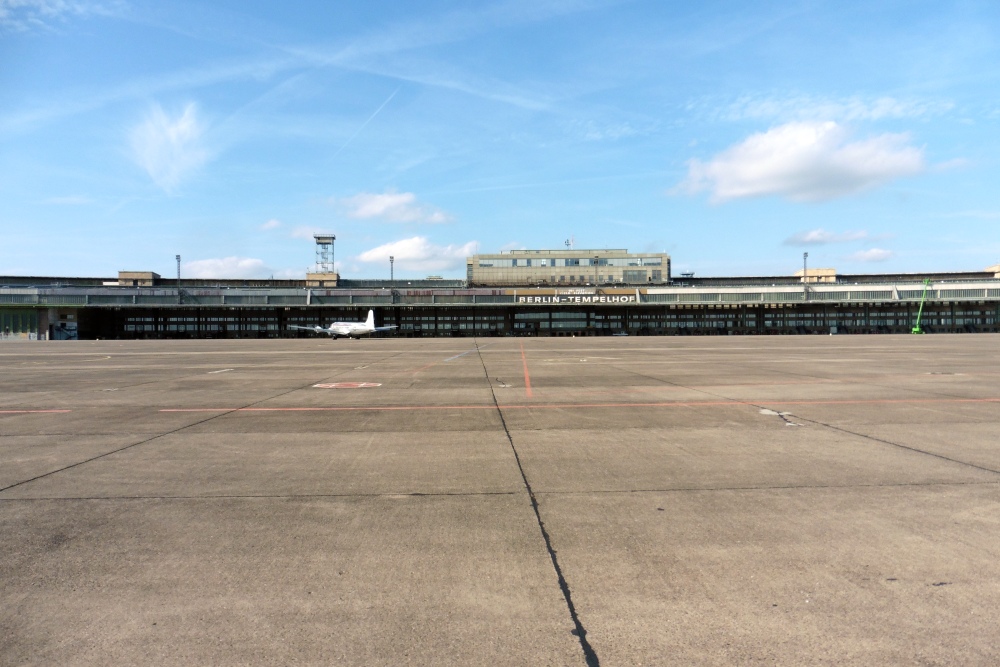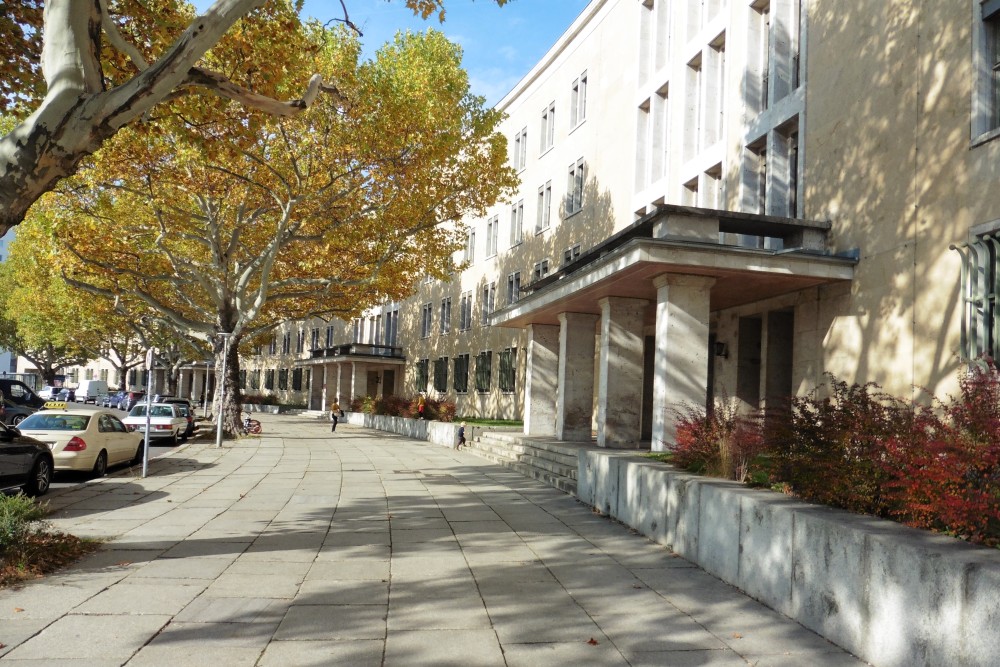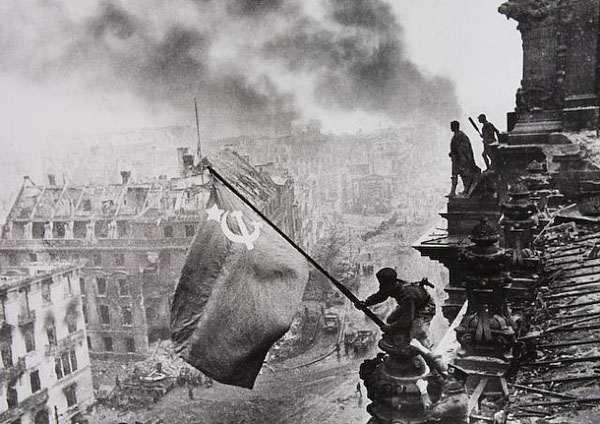Flughafen Berlin-Tempelhof
Introduction:
The Tempelhof field is located on the south side of the capital city of Berlin and, before it was put into use as an airport, was used mainly for recreation and for military parades. The first buildings of the new phenomenon of flying were built in 1922 and in the 1930s Tempelhof airport grew into one of the busiest airports in Europe.
When Hitler and his NSDAP came to power in 1933, flying in general and the airport were seen as important to the status of the new Third Reich. Albert Speer was made responsible for yet another spectacular renovation of the airfield in 1939. An underground bunker was also put into use by the Wehrmacht for its film archive.
World War II:
When the war began in 1939, construction work around the airfield ceased. The Luftwaffe used Tempelhof as an airfield but aircraft such as the dreaded dive-bombers were also built and repaired. A POW camp was built that provided the personnel.
When the Allied bombing raid on Berlin and the airfield intensified from 1943, operations were halted and some were moved to more secure locations. The Wehrmacht film archive was set on fire by the Russian army when they besieged the city, in April 1945. After the German surrender, the airport was handed over to the Americans given the division of Berlin.
After the war:
In the late 1940s, the airport was rebuilt by the Americans after which it would play an important role during the Cold War. During the blockade of West Berlin, it would serve as the vital airlift for 2 million residents of the capital. The airport was aging and in 2004 it was decided to close it due to technical problems, odor and noise pollution for local residents.
Today:
The Tempelhofer Field has come full circle. Today the site has numerous functions such as a camper place, reception of Ukrainian refugees but mainly as recreation. It is still one of the largest buildings in the world and houses offices and shelters as well as casinos, an underground railroad track, dance floor and a bowling alley.
The airport has remained virtually untouched for 60 years and much is still in its original condition making a tour very interesting. This explains all about the history of the complex but you can also take a look inside the impressive building.
Do you have more information about this location? Inform us!
Source
- Text: Cheapskatetravel.nl
- Photos: Cheapskatetravel.nl (1, 2), Koos Winkelman (3, 4, 5)
Related books
Nearby
Museum
- Luftschutzraum/Dokumentenbunker Tempelhof - Berlin
- Deutches Technikmuseum - Berlin
- Jüdisches Museum Berlin (Jewish Museum Berlin) - Berlin
Point of interest
- Eagle Head Berlin - Berlin
- Bullet Impacts Columbiadamm 122 - Berlin
- Schwerbelastungskörper Berlin - Berlin
Monument
- Memorial Elisabeth Abegg - Berlin-Tempelhof
- "Columbia" Concentration Camp - Berlin-Tempelhof
- Memorial Capitulation Berlin - Berlin-Tempelhof
Cemetery
- German War Graves Berlin-Friedrichswerderscher - Berlin
- Garrison Cemetery Columbiadamm - Berlin
- Lilienthalstraße German War Cemetery - Berlin
Remembrance Stone
- Stumbling Stones Manfred-von-Richthofen-Straße 9 - Berlin-Tempelhof
- Stumbling Stones Dudenstraße 10 - Berlin-Kreuzberg
- Stumbling Stone Friesenstraße 18 - Berlin-Kreuzberg

